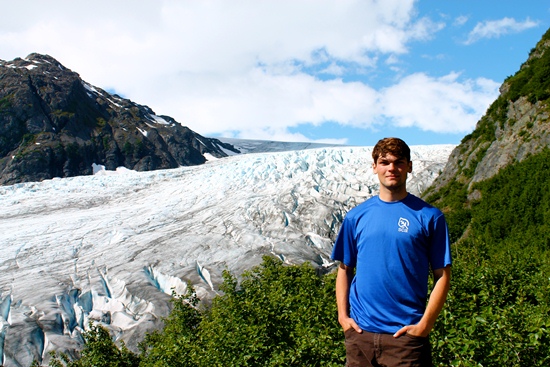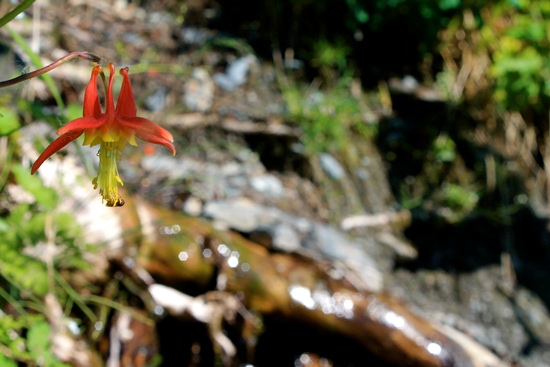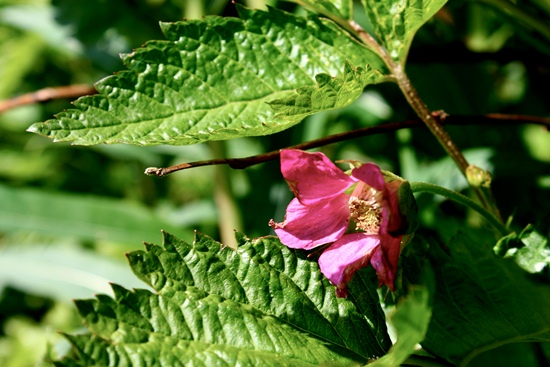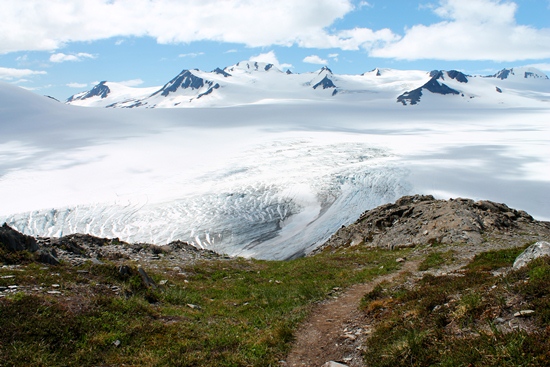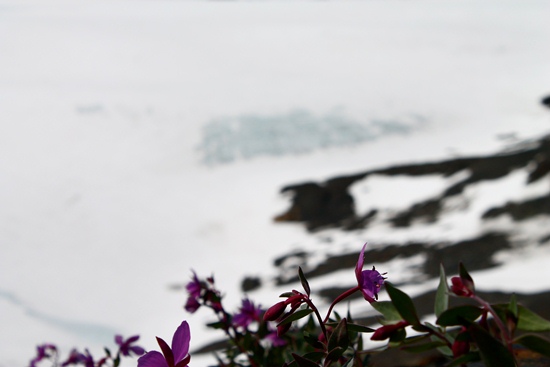Summer is well under way here in Seward. Temperatures regularly soar into the high 60s, the sun breaks through the clouds (most days) by the afternoon, and hikers and sight see-ers are showing up in droves at Exit Glacier.
One big attraction for hikers in the park is the Harding Icefield Trail, which stretches a mere 4.1 miles from the Nature Center, but rises 3,000 feet over that distance. In short, this trail is a steep, half- or full-day hike that lifts you up out of the forest, through sub-alpine and alpine zones, and ends at the edge of the Harding Icefield. This past week I finally climbed the Harding Icefield Trail, twice, in preparation for some upcoming education programs.
Author on the Harding Icefield Trail. Photo: NPS / Fiona Ritter
One thing you notice very quickly is that even though the summer is short here, it happens with a vengeance. If you don't believe me just take one look at the bugs. Mosquitos and flies of all kinds drift through the air around the lower stretches of the trail. I'm no entomologist, but it's easy to see that there are a lot of different types of insects out and about in the (relatively) warm air. Higher up and out of the cover of trees, the mosquitos start to disappear, but flies and butterflies are hard at work pollinating the plethora of wildflowers that carpet the mountainsides. If bugs aren't your thing, take a look at the plants, instead.
Or both at the same time.[pollination picture]
Fly pollinating a red Columbine (Aquilegia formosa). Photo: NPS / Max Odland
What the north lacks in tree diversity (there are 4 tree species on this side of the Kenai Peninsula... maybe a few more if you're generous with the taller shrubs), it make up for in the summer vigor of its smaller plants. In my two hikes up the Harding Icefield Trail and a few other recent excursions above tree line, I've been presented with a stunning variety of flowering plants, all trying to spread their seed in the short time between now and the looming clouds, rain, and snow of autumn.
Salmonberry (Rubus spectabilis) in flower. Photo: NPS / Max Odland
The other highlight of these trips for me is finally seeing the Harding Icefield up close. After reading and hearing so much about it, it's taken on almost mythic proportions: a Sea of Ice 50 miles long and 20 miles wide (more than half the size of Rhode Island). Its depth remains unmeasured for most of this vast extent, but the ice is at least 2100 feet thick at its deepest.
Getting up next to the ice let me see for myself what people are so excited about. It's one thing to know how big something is, but seeing, hearing, and feeling it is something else altogether. My sense of distance was totally skewed by the open space. Watching sunlight flow across the ice with the summer clouds, feeling the cold wind push past me off the ice, I was filled with an immense sense of tranquility.
The Harding Icefield in July. Photo: NPS / Max Odland
Not stillness. More of a sense of vast calm. The signs of moving ice are evident all around in the crevasses yawning at the upper edges of the glaciers, but the ice flows so subtly that it appears motionless at any one moment. The ice field's slow, persistent, calm is infectious. It's also a refreshing change of pace from the frenzied summer of the wildflowers.
Dwarf fireweed (Epilobium latifolium) flowering next to the Harding Icefield.
Photo: NPS / Max Odland

